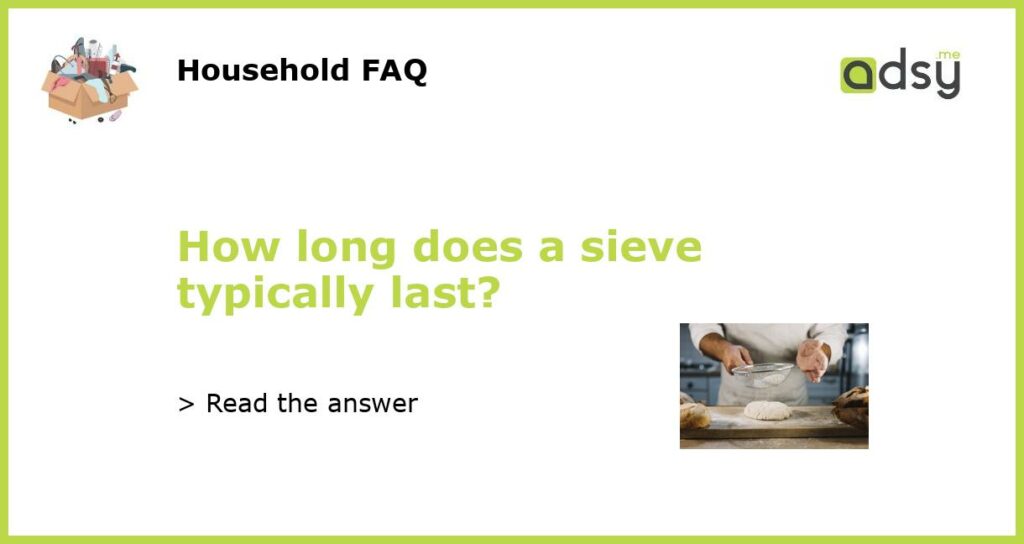Factors that Determine the Lifespan of a Sieve
A sieve is a widely used tool in various industries for separating solids from liquids or grading materials based on particle size. The lifespan of a sieve depends on multiple factors, including the quality of the sieve, the type of materials being processed, the frequency of use, and the maintenance practices employed. Let’s dive deeper into each of these factors to understand how long a sieve typically lasts.
Quality of the Sieve
The quality of the sieve plays a crucial role in determining its lifespan. Sieves made from high-quality materials such as stainless steel, brass, or nylon tend to last longer compared to those made from low-grade materials. High-quality sieves are more resistant to wear and tear, chemical corrosion, and deformation, thereby increasing their durability. Investing in a sieve from a reputable manufacturer or supplier can significantly improve its longevity.
Type of Materials Being Processed
The type of materials being processed through the sieve can also impact its lifespan. Some materials, such as abrasive or corrosive substances, can cause faster deterioration of the sieve. If the particles being sieved are sharp or have rough edges, they can wear down the sieve mesh more quickly, resulting in a shorter lifespan. Similarly, corrosive materials can damage the sieve’s surface and compromise its structural integrity. It’s essential to consider the compatibility of the sieve material with the materials being processed to ensure optimal lifespan.
Frequency of Use
The frequency of use is another critical factor in determining how long a sieve will last. Sieves that are used more frequently are subject to greater stress and wear compared to those used less frequently. Continuous use of a sieve can lead to fatigue and surface damage, reducing its overall lifespan. Additionally, frequent cleaning or maintenance, which is often required in high-volume operations, can also contribute to wear and tear. It is advisable to rotate sieves regularly to distribute the workload evenly and extend their lifespan.
Maintenance Practices
The maintenance practices employed can significantly impact the lifespan of a sieve. Regular cleaning and inspection of the sieve help identify and address any signs of wear or damage early on. Removing built-up contaminants, such as debris or residual materials, can prevent them from corroding or weakening the sieve’s surface. Employing proper cleaning techniques, such as using mild cleaning agents or following manufacturer guidelines, can also help preserve the sieve’s integrity. Routine maintenance should include checking for loose or damaged parts and repairing or replacing them promptly to prevent further damage.
Environmental Conditions
The environmental conditions in which the sieve operates can affect its longevity. Extreme temperatures, humidity, or exposure to chemicals can accelerate wear and corrosion, shortening the sieve’s lifespan. It’s crucial to consider the operating environment and choose a sieve material that can withstand the specific conditions. Protective measures, such as using covers or enclosures, can also help shield the sieve from detrimental environmental factors and prolong its lifespan.
In conclusion, the lifespan of a sieve is influenced by various factors. The quality of the sieve, the type of materials being processed, the frequency of use, the maintenance practices employed, and the environmental conditions all play key roles in determining how long a sieve will last. By considering these factors and taking appropriate measures, such as investing in a high-quality sieve, choosing the right material for the materials being processed, and implementing proper maintenance practices, the lifespan of a sieve can be significantly extended.






